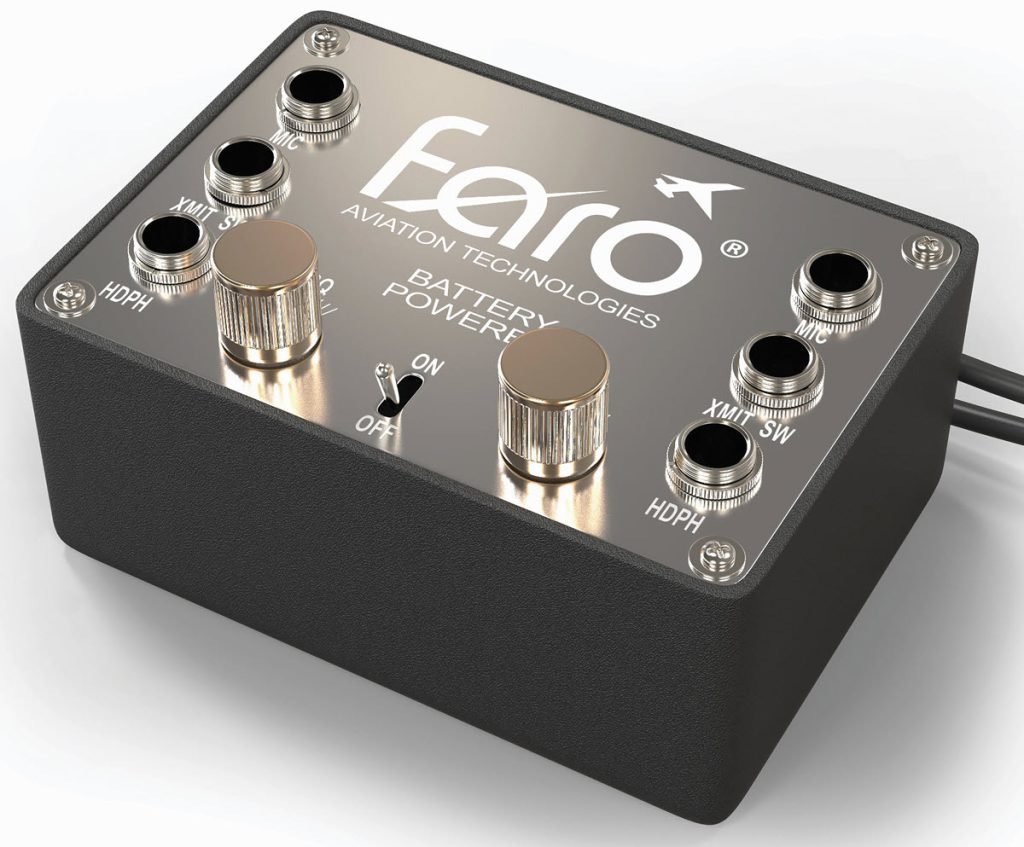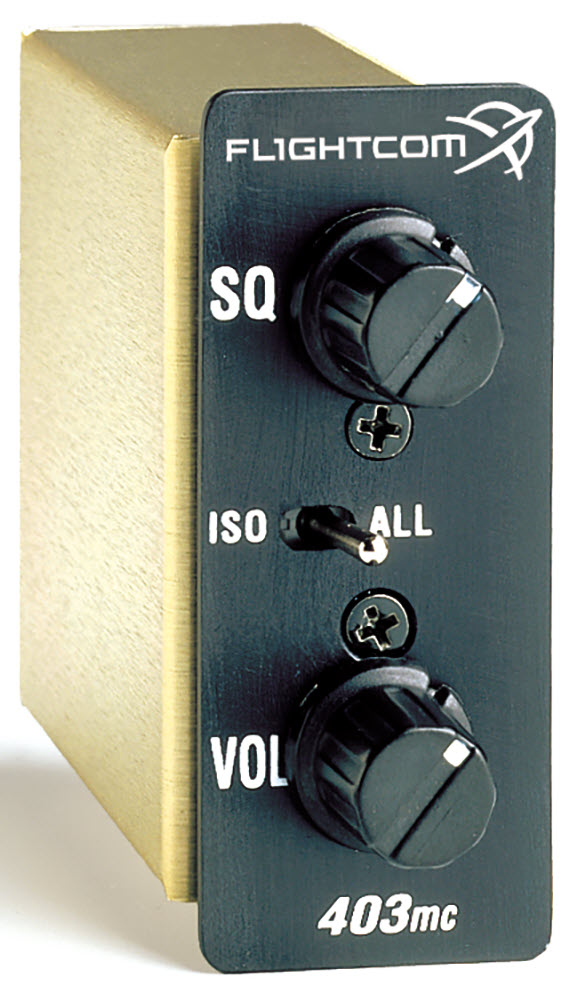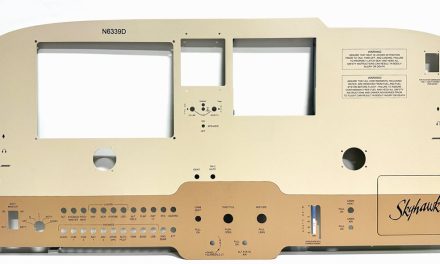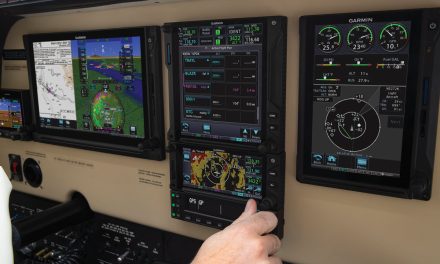
Last month we talked about equipping for VFR and I conveniently left out any talk about intercoms. No matter how you fly, unless you are always alone in the sky, you need to communicate – and not just to ATC and your fellow pilots in the pattern at a non-controlled airport. You need to comfortably be able to communicate with your co-pilot and passengers.
My first airplane was a 1964 two-place Piper Colt. For those who have entered the world of GA aircraft in the last 20 years and maybe bought their first airplane, and whose perception of the value of a legacy aircraft is skewed by today’s economy, let me bust that bubble! The Colt cost me $2800. It had about 800 hours since overhaul and nice paint. Avionics was a Narco navcom with VOR and likely a Narco AT-50 Transponder. There was no intercom, so you yelled. Headsets were primitive and designed to keep out ambient noise and make it a little easier to understand the radio. In short, communication was a struggle, but planes were cheap!
The Colt was followed by a Stinson Voyager (bought in 1974-$3200), Piper Cherokee 140 (1982-$8000) Cherokee Six- 260 (1986-$22,000 with new paint!), Grumman TR-2 (1990- $20,000) and a Corbin Baby Ace Experimental (1990-$3500). Today, you’ll pay $30K for a nice Colt and $150K for a decent 1969 Cherokee Six! I paid $60K for six airplanes that are worth about $325K today. That’s more than a 500% increase. If only I had kept them all!
Intercoms
Anyone with a recent audio panel in their aircraft has an intercom integrated into the unit. VFR pilots with a single com or legacy aircraft owners with legacy audio panels like the Bendix King KMA-24, the even earlier King KMA-20, the Collins AMR-350 or the Narco CP-136, will find them reasonably reliable (with repair support or simply cheap to replace) and dependent on an external intercom. These, though basic compared to today’s amazing audio panels, are enough for the VFR mission.
There are portable intercoms that operate with an internal battery or plug into a cigarette lighter for power. They aren’t typically of the same audio quality as a panel mount intercom, but they are a simple, affordable solution if you can put up with the wires running all over the aircraft. Even within the panel mount intercom options, you’ll find differences in quality.
I learned early in my avionics consulting career (from PS Engineering), the power amplifier in an intercom plays a significant role. Intercoms with lower power amplifiers require you to turn up the volume in order to not hear the ambient noise and this often results in distortion. It’s a safe assumption that the lower the price, the lower the power, so it often makes sense to spend a little more.
Introducing music into the equation can be desirable for some pilots. I always liked it on extended cross countries. Lower priced intercoms may or may not have music input. If music is attractive to you, don’t buy a cheap intercom. Distorted audio means distorted music.
Then there’s the question of mono versus stereo. If you want to introduce music into your flight, take note of my experience. A lot of the fidelity and the stereo separation tends to get lost in the ambient noise level of an aircraft, so unless you are an audiophile, mono may do the trick. Stereo intercoms require stereo headset jacks and stereo headphones. Today’s cellphones provide excellent quality music and, while all the intercoms here still require a wired connection, Bluetooth adapters are out there that can wirelessly introduce music directly to your headphones.
The market for intercoms is significantly smaller today than the 60’s through 80’s when audio panels did not offer integrated intercoms, so we don’t usually see new companies entering the intercom market. Frankly, we see the same players offering intercoms today. A few good players offering premium intercoms are gone. QuietFlight, Telex, David Clark, NAT and DRE were manufacturers of intercoms 20 years ago that are no longer in the marketplace. Telex and David Clark continue to make headsets. Faro is a newer name. They got into the headset market in 1999 and now offer a portable intercom.
We frequently find manufacturers of headsets also in the intercom market. Companies like PS Engineering got into the intercom market in 1986 and expanded into what I consider the premiere manufacturer and designer of audio panels in the country. They avoided the headset market and today are responsible for the integrated audio panel concept and most of the enhanced features we see today in audio panels.
Let’s look at what’s available in intercom technology today for the VFR pilot or legacy aircraft owner with an older audio panel who is upgrading or replacing an intercom. As I frequently do, I’ve listed them in alphabetical order.
Faro Aviation
Faro Aviation is a new name in the market, although they got their start in 1999 when they entered the headset market. Faro also offers a basic 2-place portable intercom at $109. This is the lowest priced intercom I see in the market. It has no music capability and provides simple VOX communications.
Flightcom
(www.flightcom.net/products/general-aviation-products/intercoms)
Flightcom has been in the Intercom/Headset market since the late 80’s inspired by the difficulty of communicating with an instructor during flight training. Today, they offer three intercom options. The IISX is a simple two-place portable intercom at $119. It operates on battery or ships power (with the included cable) and has an auxiliary input, likely for music. They offer two panel-mount intercoms: The 403MC, mono four place model at $199 is the lowest priced panel mount intercom on the market and a two-place stereo version 403 also at $199.
Have a website login already? Log in and start reading now.
Never created a website login before? Find your Customer Number (it’s on your mailing label) and register here.
JOIN HERE
Still have questions? Contact us here.






